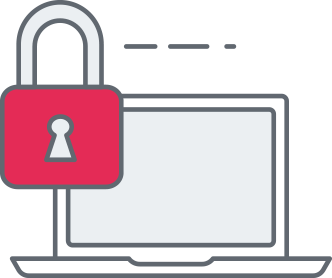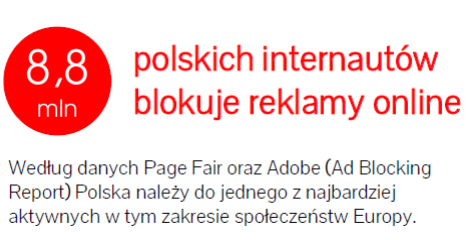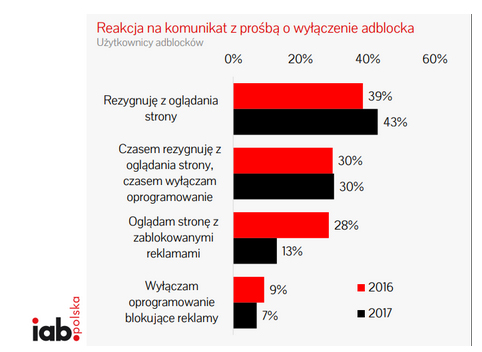Do your customers block your ads on the Internet?
It is pretty obvious that people who provide content on the web (social media, newspaper publishers or blog owners) make a living especially by selling their advertising space. As the Panoptykon foundation rightly noted in its report Tracking and profiling on the web dated 2019, advertisers’ expectations have changed in recent years – it is no longer important how many people received the message, but how many of them responded positively to it. What does it actually mean?
For example, a positive response to an ad involves leaving one’s contact details or purchasing given products. It turns out that the more targeted the ad, the more attractive the user tracking.
The attractiveness of user tracking consists of age, gender, place of residence, interests, life situation, shopping history, and social networking.


Source: IAB report “Phenomenon of ad blocking. Second Edition – Summary”, 2018
You can probably already imagine that AdBlock, which is used by an increasing number of Internet users, blocks your ads on various sites. According to the report Content marketing published by Interaktywnie.com in 2019, up to 40% of Polish Internet users block graphic ads.
What’s more, users are increasingly avoiding marketing communications. And when they receive a message asking them to disable AdBlock, they give up browsing a given site.
Year by year, the proportion of Adblocks users keeps on increasing. So how can you reach users to encourage them to visit your site and become familiar with the offer?
Web push notifications allow the user to quickly and easily sign up for notifications and be up to date with the content of your website.
Push notifications – AdBlock is nothing to be afraid of!
Web push notifications, as one of few graphic ads, are not blocked by ad blocking applications, such as: Adblocks, uBlock Origin, or Ghostery. What’s more, when creating a subscribers’ base, you do not collect such data as email address or phone number. It is worth emphasising that both the tendency to give consent to web push notifications and efficiency of their delivery to users are significantly higher for web pushes than other, traditional tools of advertising display.
When creating your account on the PushAd website, you get access to an intuitive and easy-to-use panel where you can develop and send web push notifications. It is you who decides what to inform your potential customers about and whether you want to send web push notifications to their computer, phone, or tablet.
Source: “Phenomenon of ad blocking. Second Edition – Summary”, 2018, IAB, “Tracking Report”, 2019, Panoptykon Foundation, “Content marketing”, 2019, Interaktywnie.com

Source: IAB report “Phenomenon of ad blocking. Second Edition – Summary”, 2018
Permission marketing
Nowadays, consumers are increasingly demanding and aware of marketing techniques. Mass advertising displayed on various websites has resulted in the so-called “banner blindness”. A user simply does not pay any attention to ads or, irritated, enables AdBlock. The effect is the same – lower conversion and chance for sales. Intrusive ads, even those matching the recipient’s preferences, are not effective and can only discourage consumers to a given brand. They did not agree to have the banners displayed, so there is little chance that they would perform an action desired by the company. This is not the case of push notifications. These operate under permission marketing – the user voluntarily signs up for the subscriber base, which can suggest some engagement in the communication process.
Websites often feature up to a dozen different bright flashing banners, which makes it impossible to read the site content comfortably. Not surprisingly, the user enables ad blocking systems. In the case of push notifications, recipients are not surprised by the pop-up window, since they have voluntarily signed up for the subscriber base. Web push notifications appear in the screen corner, so they are visible and still don’t prevent users from viewing the web content. In addition, notifications are provided within the specified time, even if the user leaves the website. The only condition to receive notifications is to have a web browser open. Web pushes are an effective form of advertising and certainly inspire more trust thanks to non-invasive and non-intrusive messages.

